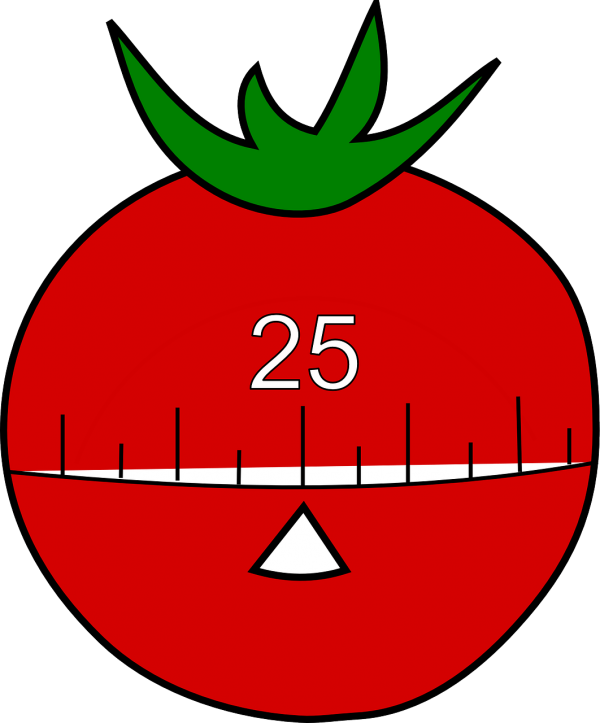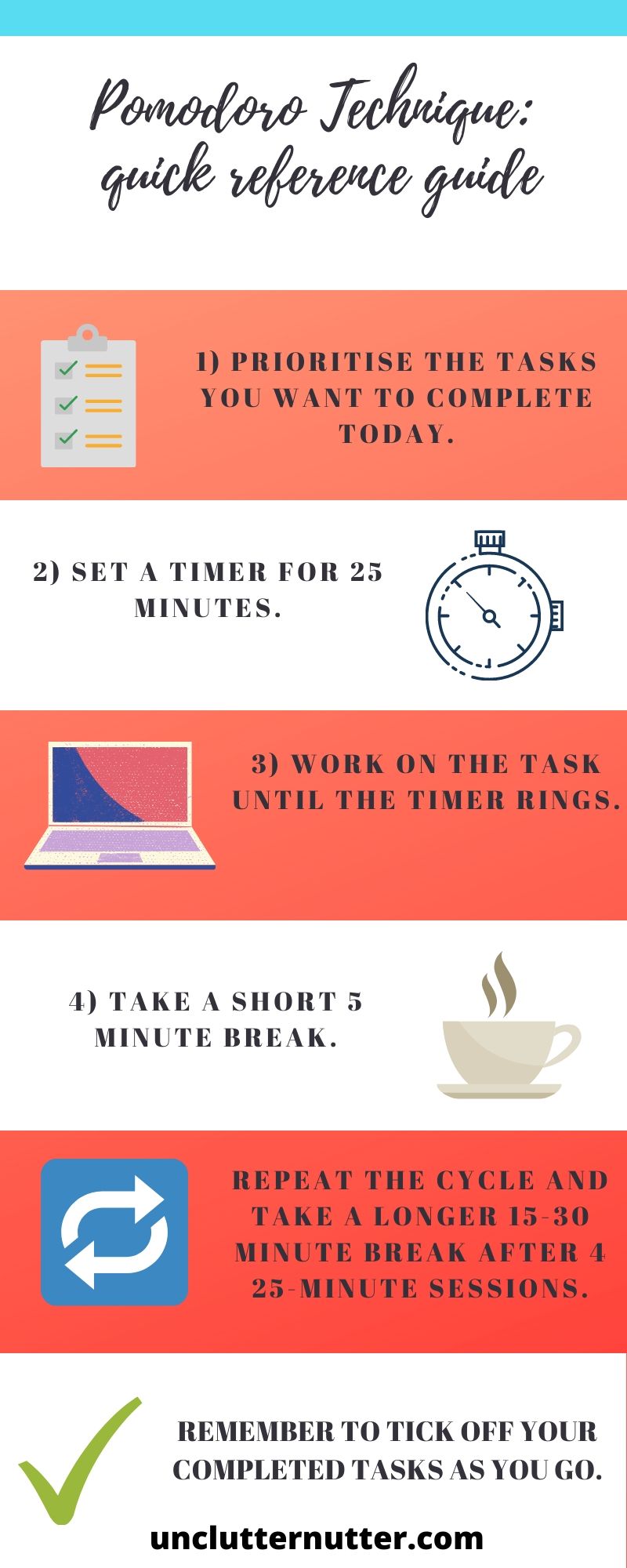Have you ever tried to do too many things at once and as a result, you don’t actually finish anything? If so, you need to consider becoming a single-tasker!
Most of us have a to-do-list that feels like we’ll never complete it. Each time we think we’re getting near the end, we add more things to the list and the stress continues. When we try to do too many things at once, our mental state takes a big hit and we can feel the effects as stress and anxiety. Often, we burn out and become completely exhausted.
Enter the Pomodoro Technique.
What is the Pomodoro technique?
In simple terms, the Pomodoro Technique is a time management tool. It breaks your working day into 25-minute blocks of time. It’s a system that helps you focus on one task at a time, using your time more efficiently.
The Pomodoro Technique was invented by Francesco Cirillo when, as a university student, he used a tomato-shaped timer to break his tasks into 25-minute working periods. Pomodoro is Italian for tomato (hence the name) and for that reason, the 25-minute intervals are known as pomodoros.

How does it work?
The Pomodoro technique is a very simple process. You break your working hours into 25-minute sessions, each followed by a 5 minute break. Once you have completed 4 pomodoros (4 x 25 minute blocks), you then take a longer break of 15 to 30 minutes.
What are the benefits of the Pomodoro technique?
Research suggests that we can only concentrate on something for short periods of time before we start to lose focus. By breaking our tasks down into short time intervals, we decrease the possibility of feeling of feeling overwhelmed. It also gives our brain a chance to refresh, gain new insight on the task at hand and be more creative. When you return to your work, you will have a fresh set of eyes to reconsider what to do next. It is also worth mentioning that it is a rewards-based technique. This helps us focus because we know at the end of it, we get our reward break.
Working in shorter bursts and taking regular breaks helps train our mind to really focus. This helps improve our overall concentration and attention span. If we disallow any distractions for 25 minutes (including checking our phone!) then we slowly teach our brains to be able to focus on just one thing. No need for any multitasking here.
Knowing that your work day will be broken down into 25 minute slots allows you to prioritise tasks so that you can finish them in order of importance. You can micromanage your own workload by breaking larger, more complex tasks into smaller, more do-able ones. As your day goes on, you will start to feel accomplished because you are completing these smaller tasks. This helps you to see that you are getting closer towards completing the big job altogether.
One other, often overlooked, benefit of the Pomodoro technique is that it gives our bodies a physical break too. This might be having a break from being hunched over a computer screen or sitting with a bad posture for too long. Getting up every 25 minutes can help alleviate the feeling of stiffness in our joints and neck, tired eyes from staring at a computer screen for too long and it can help with blood circulation.
What challenges does the Pomodoro technique bring?
Like any new habit you try to form, it might take you a little while to get used to working in smaller time intervals. For people who are used to sitting at a desk for hours on end, it might feel unsettling to have to take breaks more often. You might feel like you are not working hard enough or that you are wasting time. Rest assured that as long as you are staying focused and working for the 25 minute slots, you are working plenty hard.
Some might worry about the possibility of being interrupted during a pomodoro. In this case, take it as it comes and decide how you want to handle the situation. If it is something urgent, you might have to stop in the middle of your pomodoro and come back to it later. (The world is not going to end if you don’t see the pomodoro through right to the end each time.) On the other hand, ask yourself if the interruption is something that can wait. Can you tell your co-worker you are in the middle of something and that you will get back to them in 10 minutes? Chances are that would be completely acceptable. Remember that following the Pomodoro Technique puts YOU in control of your work schedule. You don’t need to deal with all interruptions then and there.
One more thing to note is that the Pomodoro Technique is the opposite of multitasking. It is a technique that follows the single-tasking lifestyle. If you are an avid multitasker, this will prove to be a different, yet effective way of completing your work.
Why you need this time management tool
Some people have created a habit of working for long periods of time without any breaks. This can wear you out both physically and mentally and can add to the feeling of stress and anxiety. We often tell ourselves, ‘I’ll just finish this last thing and then I’ll stop,’ and then we find ourselves still working an hour later, without taking a break. We put off going to the bathroom, we skip eating, we forget to stretch our legs and we lose track of any sense of balance in our life.
By trying the Pomodoro technique, you will create a better sense of work-life balance. You will also be giving your body and mind the break that it needs to work more efficiently.
There is only one way to find out if the Pomodoro Technique can help you. Try it! You might need a little time to get used to it if you’re accustomed to working for long stretches at a time. Give the Pomodoro Technique a try and you might be pleasantly surprised at just how effective it can be. After all, it’s all about doing less and achieving more!





